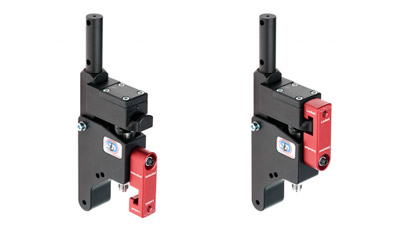Michelle L. Lange, OTR/L, ABDA, ATP/SMS

Dynamic Seating can adjust for safe transportation of wheelchair users. This DRBi component latch can be locked to safely limit movement during transportation.
For those of us that spend a good amount of time driving, we don’t usually think about the time and money spent making our cars safe.
Similar to the car industry, the wheelchair industry also has guidelines for transporting people who ride in their wheelchair in a motor vehicle. RESNA has a position paper on this subject, as well as testing standards: WC19 and WC20. The University of Michigan Transportation Research Institute has a great website dedicated to this topic as well! These are all wonderful resources, though none specifically address transportation of someone using Dynamic Seating. In this series of blogs, we will address transportation of the person using a Dynamic Rocker Back interface, Dynamic Footrests, and Dynamic Head Support Hardware.
It is important to point out that the tie down systems used to secure the wheelchair frame to the vehicle all attach below the level of seating components and rely on the integrity of the wheelchair frame itself.
When not in transit, with the latch in the unlocked position, the client typically exerts a certain amount of force against the DRBi, compressing elastomers which provide movement of the back and then assist the client back to an upright position. In the unlocked condition, the back is free to respond to the external forces of a car moving, allowing the back and the wheelchair occupant to move fore and aft in response to the impact and rebound. In the unlikely event of a motor vehicle collision, this uncontrolled anterior / posterior movement could result in damage and or injury.
We recommend that the Dynamic Rocker Back interface (DRBi) be latched or ‘locked’ during transportation. Using the lockout feature of the DRBi rigidizes the back and increases safety during transportation.
While the Seating Dynamics Dynamic Rocker Back interface has been crash tested, the wheelchair and occupant should use an approved WC-18 Wheelchair Tiedown and Occupant Restraint System, including a belt-type occupant-restraint system with both a pelvic belt and one or more shoulder belts.
At Seating Dynamics, we are all about Movement. However, we are also all about Safety. It is critical to lock-out the DRBi during transportation. But don’t forget to unlock this Dynamic Seating component once you arrive!
References:
RESNA’s Position on Wheelchairs Used as Seats in Motor Vehicles
University of Michigan Transportation Research Institute
Transporting Children with Special Health Care Needs (May 2019)
** This post was originally published on https://www.seatingdynamics.com/2020/03/25/dynamic-seating-transportation-drbi-considerations/

